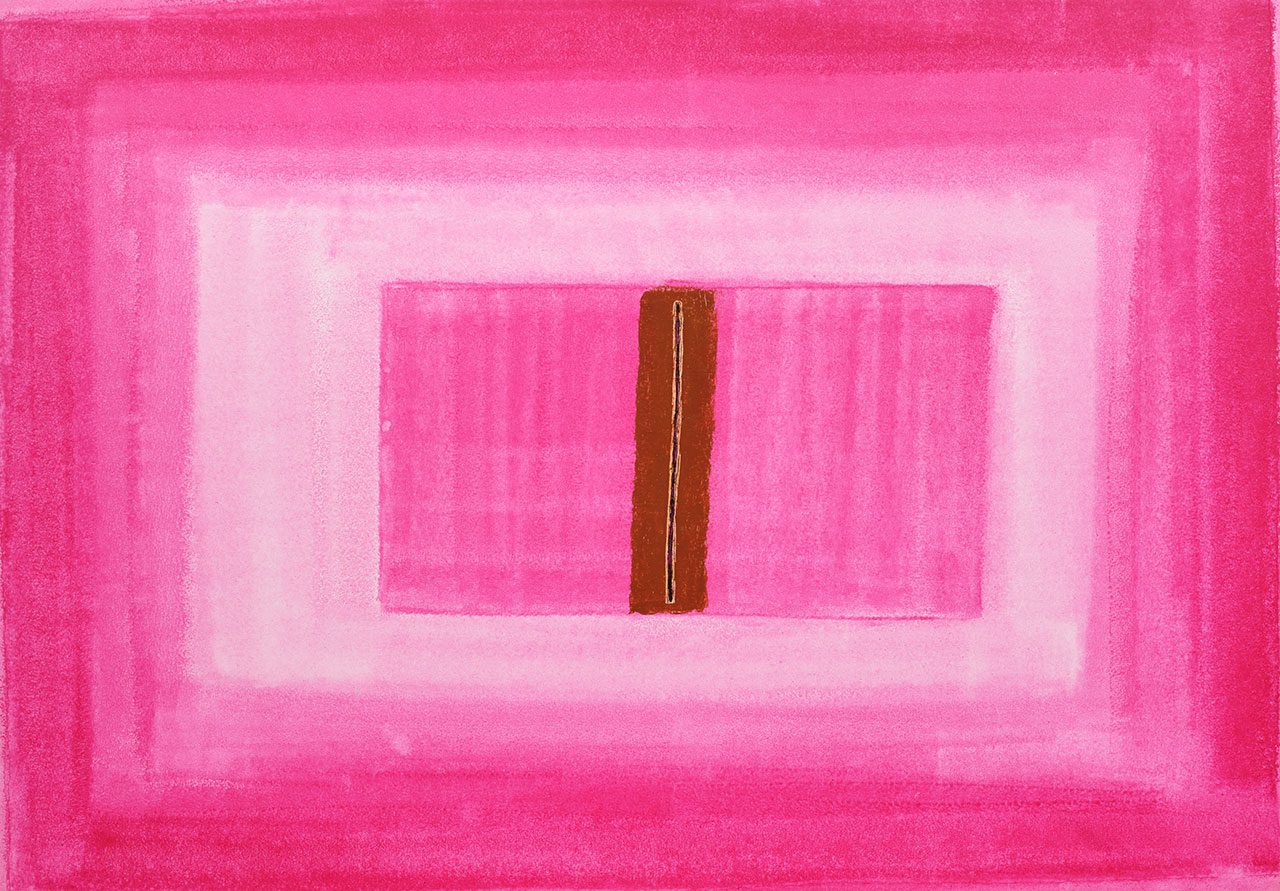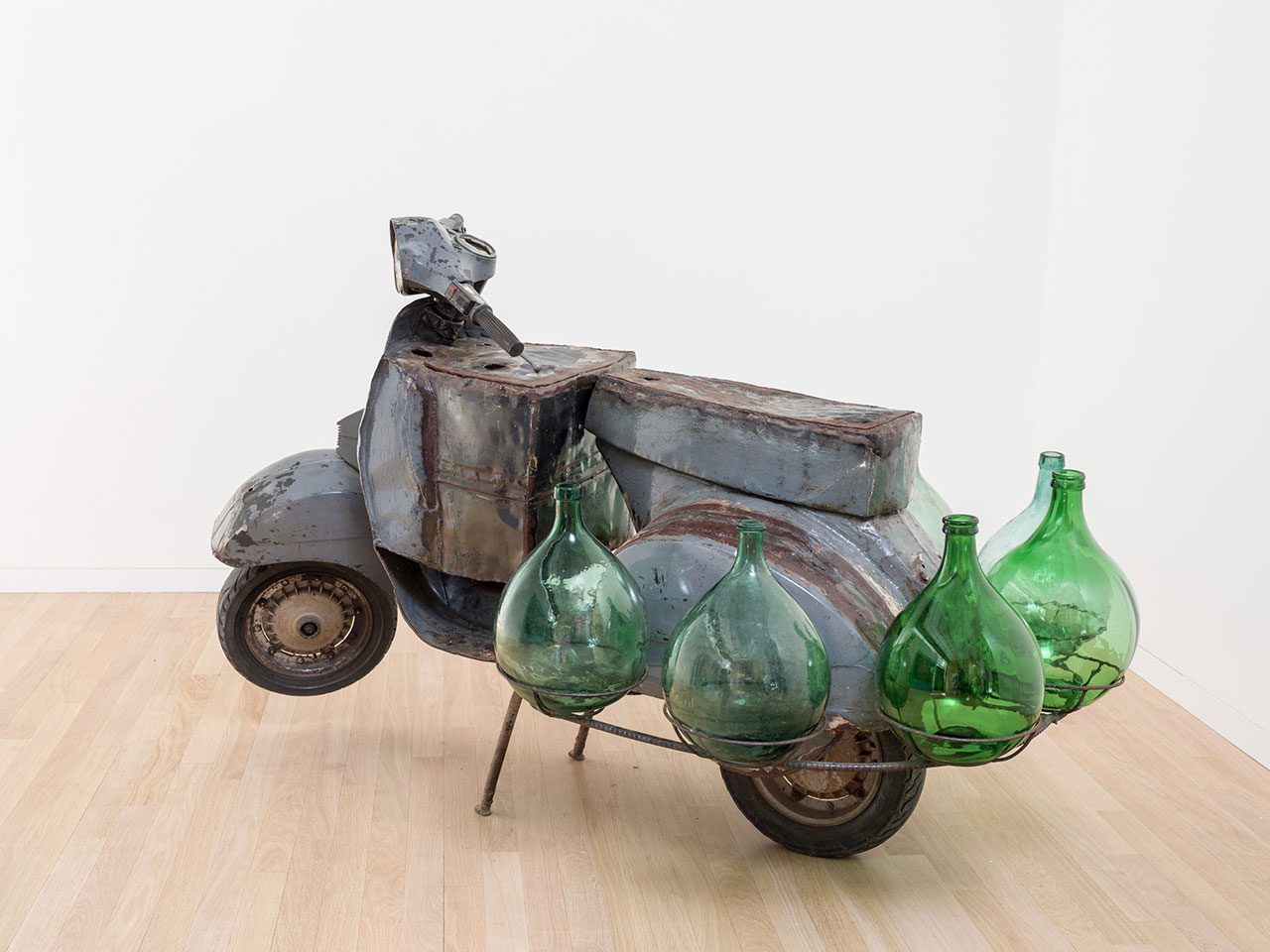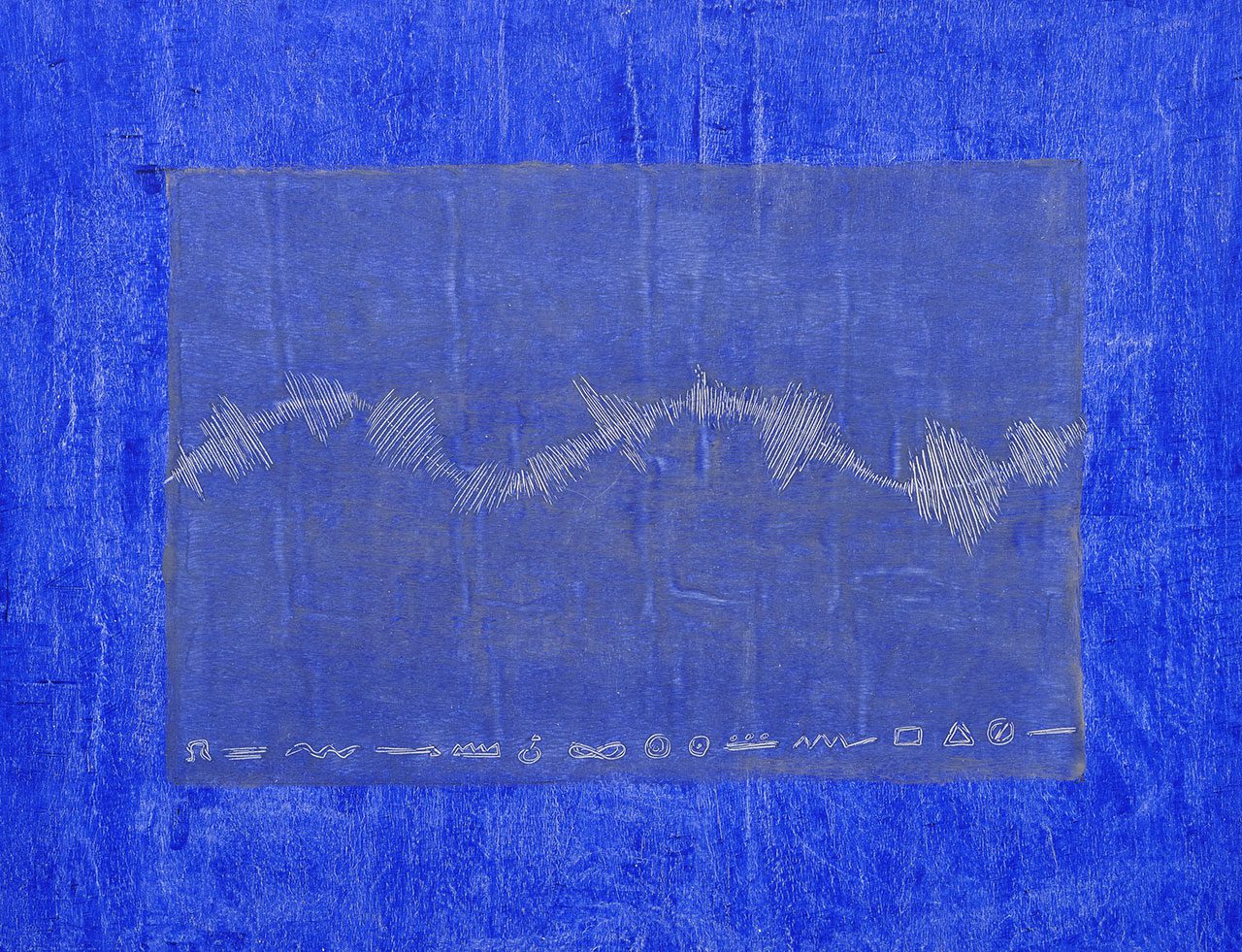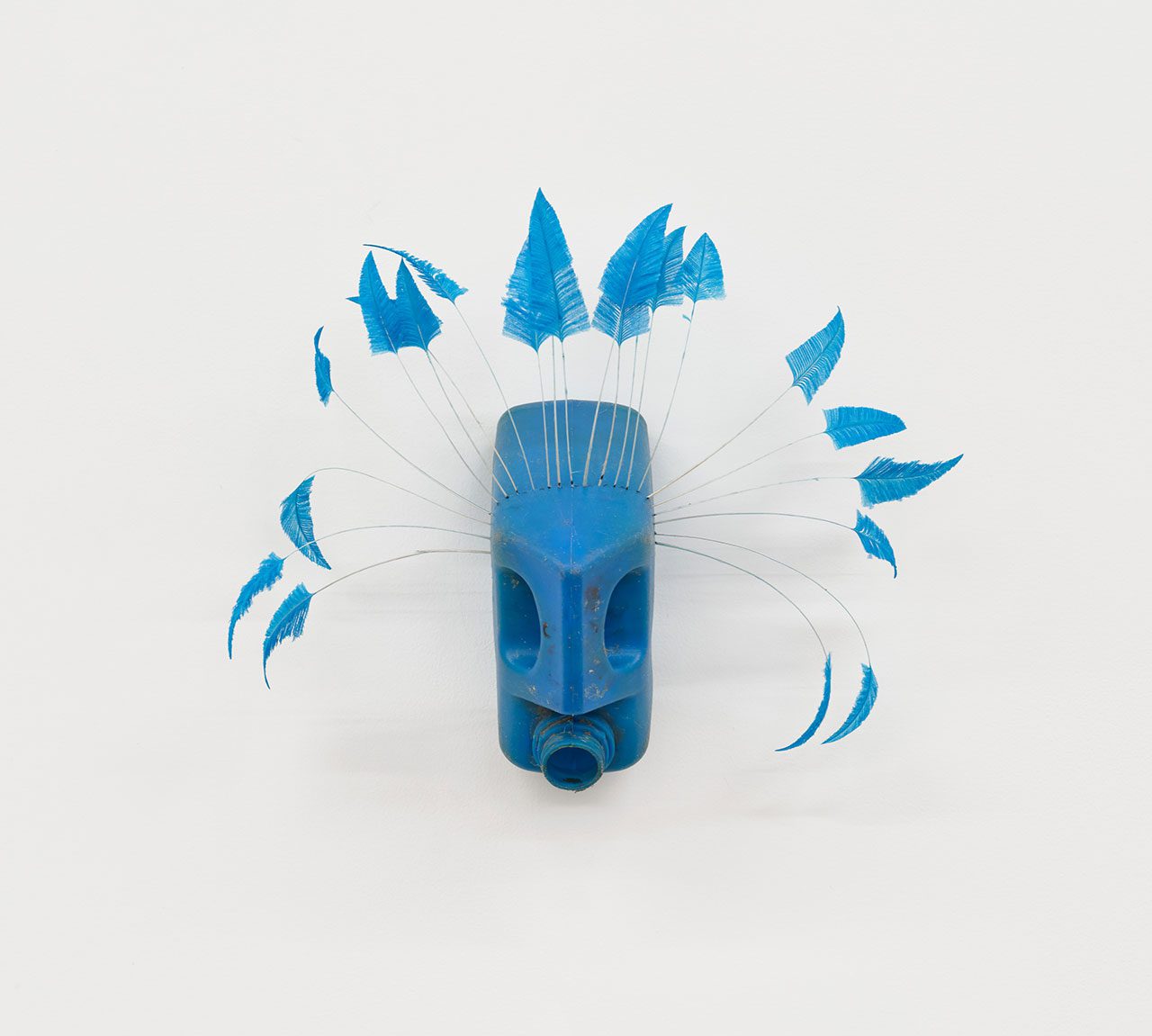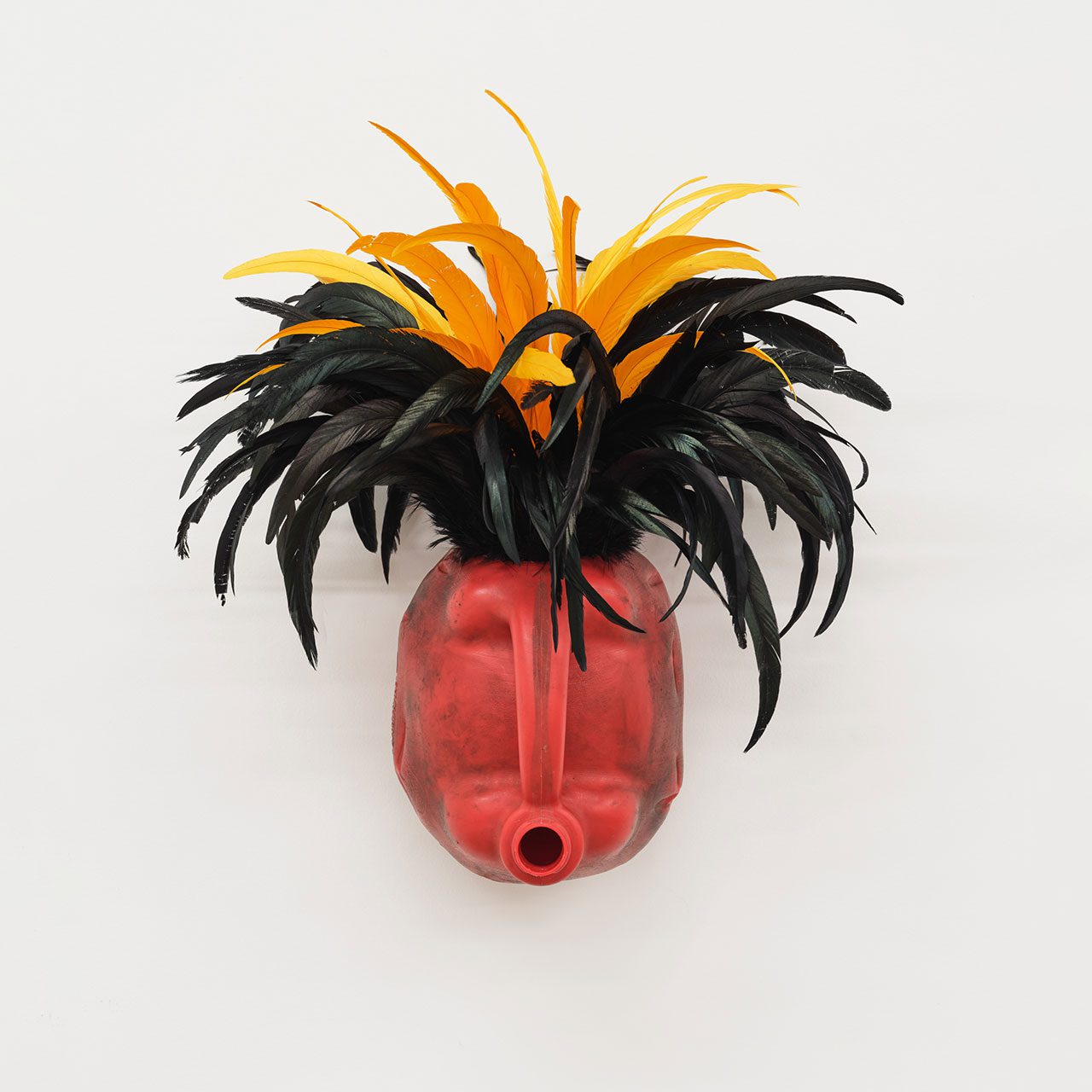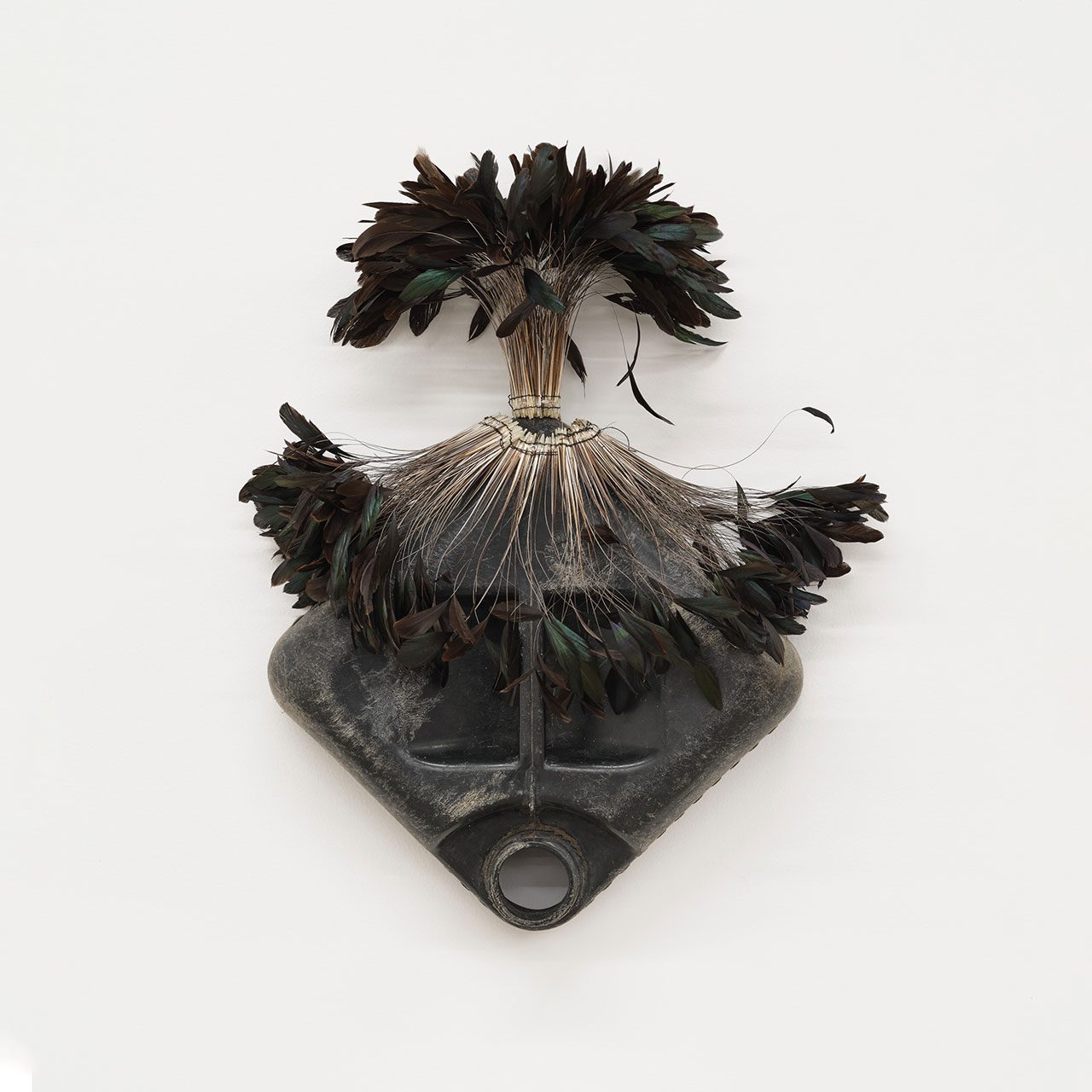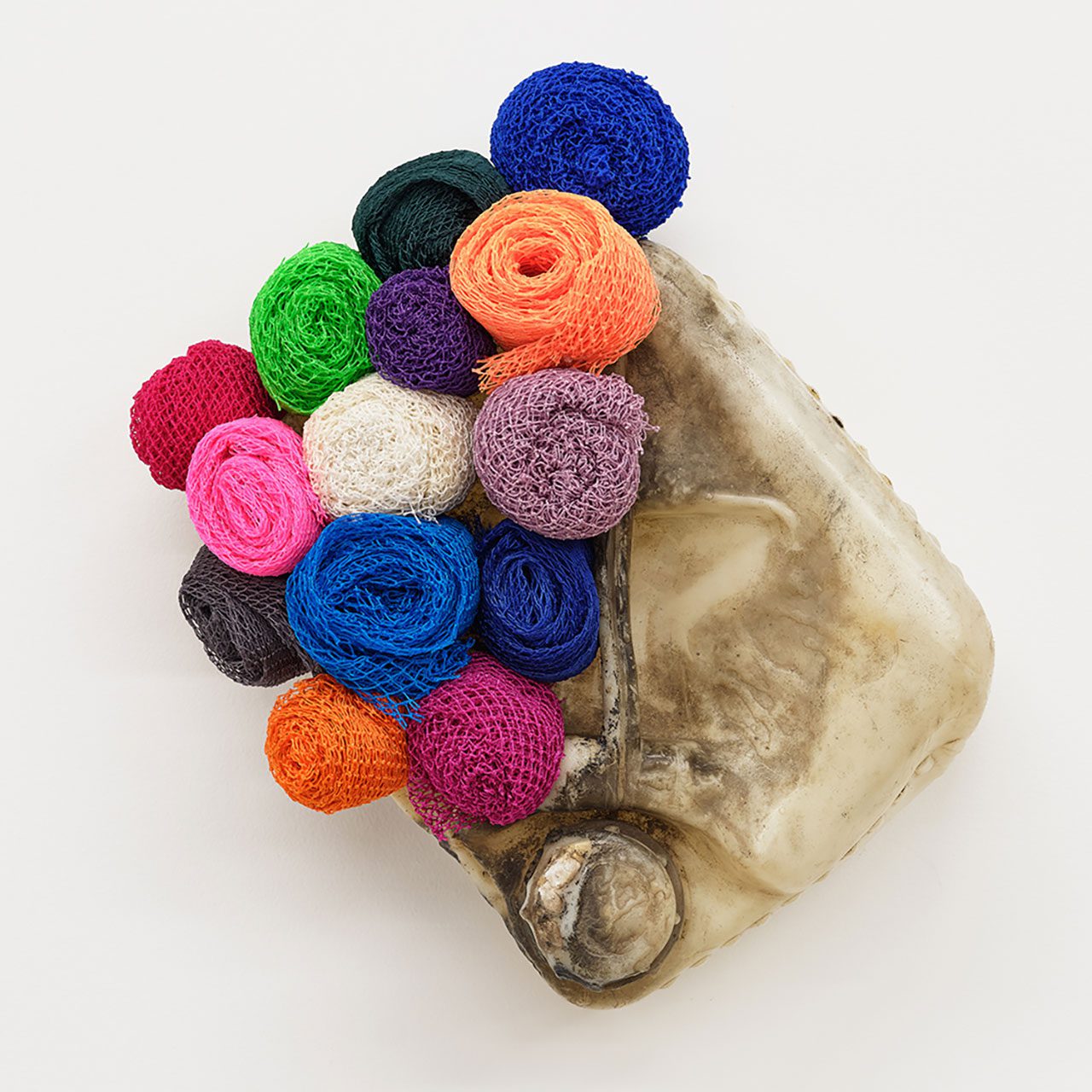ART CITIES: Athens-Romuald Hazoumè
The work of Romuald Hazoumè deals with the social and political history of Africa and Africa’s dynamic, ever-changing role within the international art scene. He repudiates the idea that Africa’s problems exist as an anomaly “We need to understand that we have the same problems all over the world on different levels. We all take up this “Coca Cola” culture, which makes us unaware of our own culture”. He argues that we exist within a global situation in which we are all unaware of our own direction and origins – a problem that he deals with in his work.
By Efi Michalarou
Photo: Gagosian Gallery Archive
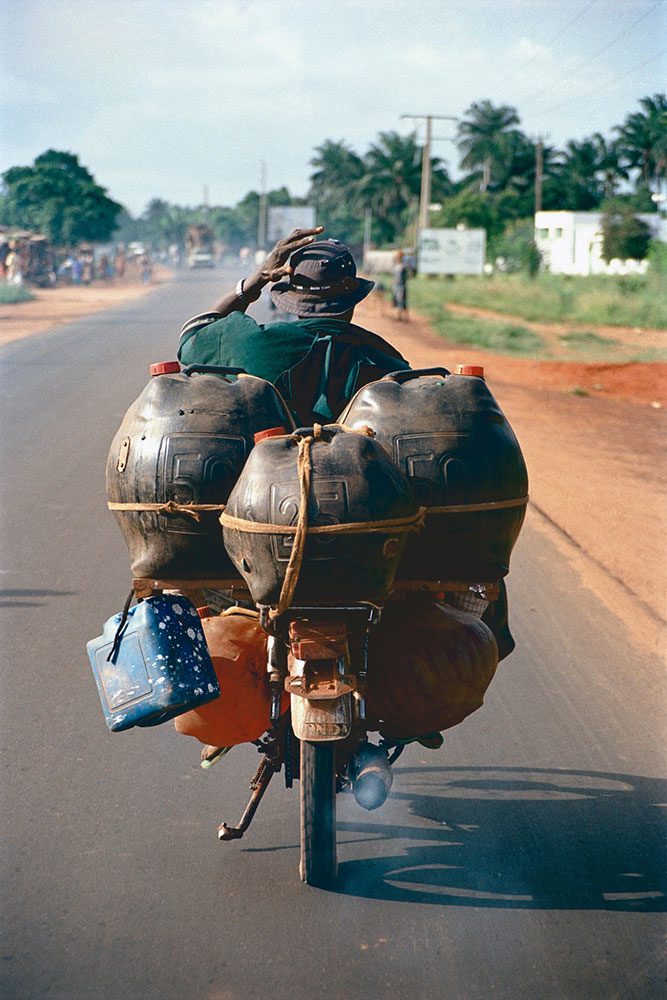
Born in 1962 in Porto-Novo, Benin, where he still lives and works, romuland Hazoumè is from a Catholic family of Yoruba origin. He carries on the tradition of the arè—an itinerant artist of Benin’s past who transmitted its culture to other realms. In the 1980s, Hazoumè began incorporating “bidon” (plastic jerricans that are used to traffic contraband gasoline from neighboring Nigeria) into his work. Precariously balancing these containers on overburdened bicycles and scooters, those who are compelled to pursue this trade face considerable danger. The artist’s incorporation of these objects of survival, transportation, and exchange addresses global economic and ecological concerns. Hazoumè’s mask sculptures operate as portraits, each bearing a distinct individuality conveyed by its recontextualized materials and form. These works synthesize Yoruba traditions and wider African culture, and draw on the longtime Western fascination with mask-making to consider identity, spirituality, and history. When grouped together into larger assemblages, the masks also engage with such issues as slavery, migration, and disenfranchisement. Romuald Hazoumè’s multidisciplinary practice engages deeply with the postcolonial legacies and contemporary realities shaping his native Benin. “Les fleurs du mâle”, his first exhibition in Greece, brings together paintings, sculptures, and photographs spanning two decades of artistic production. Hazoumè is renowned for transforming discarded industrial objects into striking anthropomorphic sculptures. His singular mask-like creations fuse plastic containers and appliance parts into expressive faces, while elements such as nylon, fishing nets, and feathers become hair, clothing, and stylistic markers of individuality. Rooted in Yoruba culture and pan-African traditions, these works not only evoke the sacred and performative significance of African mask-making but also offer a sharp critique of the enduring global fascination with these cultural artifacts. The exhibition’s title, “Les fleurs du mâle”, plays on the double meaning of mal (evil) and mâle (male), alluding to Charles Baudelaire’s “Les Fleurs du Mal” (1857). Hazoumè provocatively states: “Many of the world’s problems today are caused by men. Wars and conflicts are fueled by men who inflict harm on their people. And yet, we are expected to accept their rhetoric—their insults and bombs—as flowers. But they are not flowers”. Two sculptures, “ZoCooter” and “Bunkely” (both 2019), repurpose scooters once used for smuggling contraband gasoline from Nigeria—an economic lifeline for many in Benin. By welding additional metal elements and incorporating large glass dame-jeanne vessels—once used to store and sell fuel—Hazoumè contrasts the brute resilience of metal with the fragility of glass, creating a poignant metaphor for the perilous nature of this trade and, more broadly, for life itself. His accompanying photographs document the ingenuity and desperation of those engaged in this illicit economy, capturing images of precariously overloaded scooters and bicycles that underscore the economic and ecological stakes of survival. Hazoumè’s paintings in the exhibition draw inspiration from Fâ—a sacred system of symbols and divination developed by Yoruba-speaking peoples over centuries. These minimalist yet potent forms resonate across West Africa and beyond. In “Homme vivant” (2009), a central vertical line symbolizes a standing, living man, while “Vibration” and “Le son” (both 2015) translate musical wavelengths into dynamic, colorful compositions—offering a contemporary reimagining of traditions that remain both ancient and vital. Through his sharp visual language and incisive wordplay, Hazoumè challenges perceptions of power, heritage, and resilience, weaving together past and present in a body of work that is as politically charged as it is artistically profound.
Photo: Romuald Hazoumè, Les fleurs du mâle, 2024, Plastic, fishing nets, and copper, 14 1/4 x 14 1/4 x 7 7/8 inches (36 x 36 x 20 cm), © Romuald Hazoumè, ADAGP 2025, Photo: Thomas Lannes, Courtesy the artist and Gagosian
Info: Gagosian, 22 Anapiron Polemou Street, Athens, Greece, Duration: 11/3-26/4/2025, Days & Hours: by appointment, https://gagosian.com/
